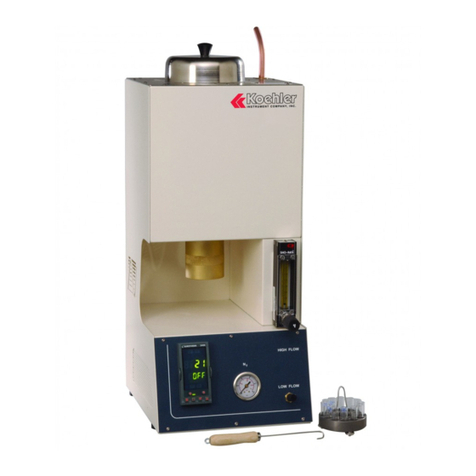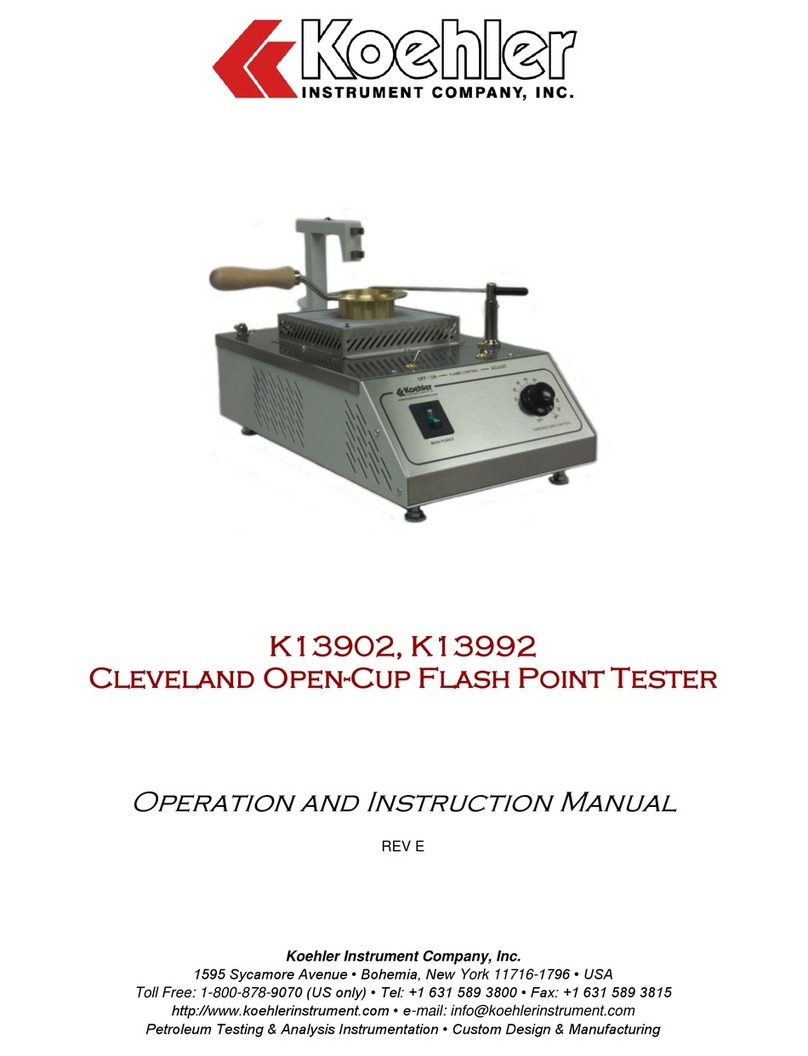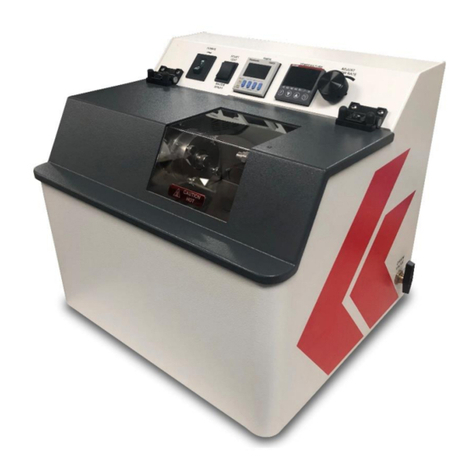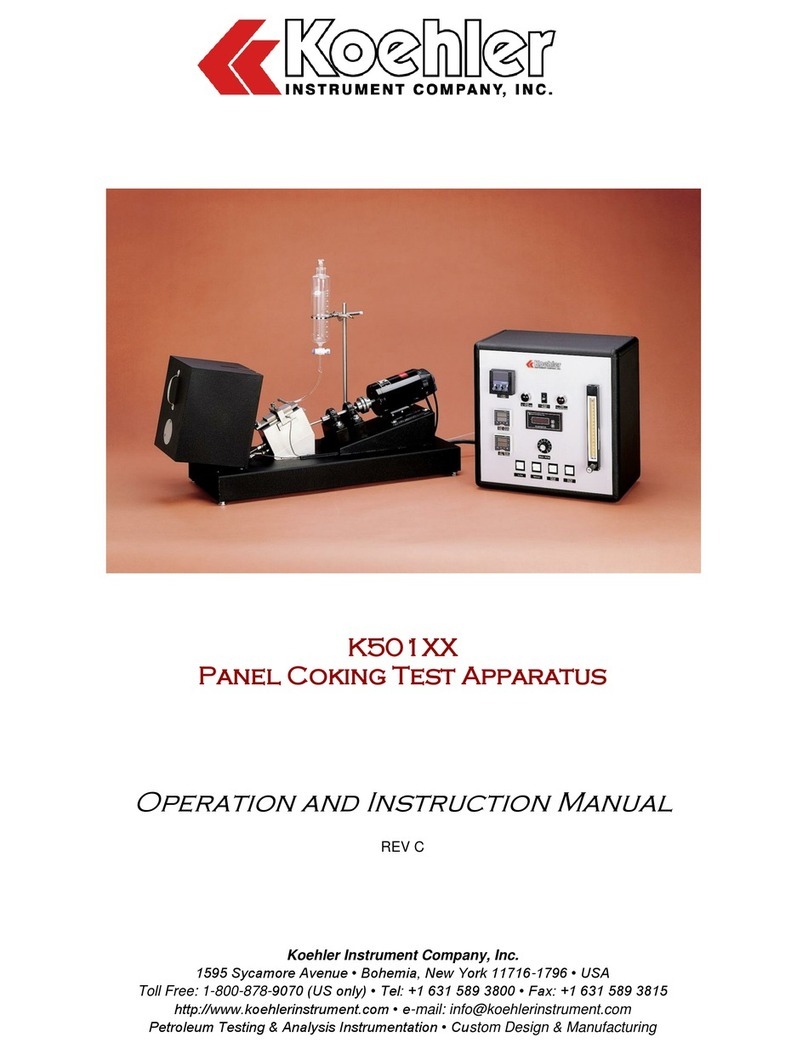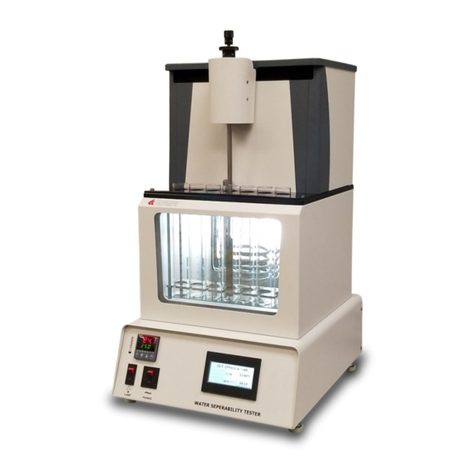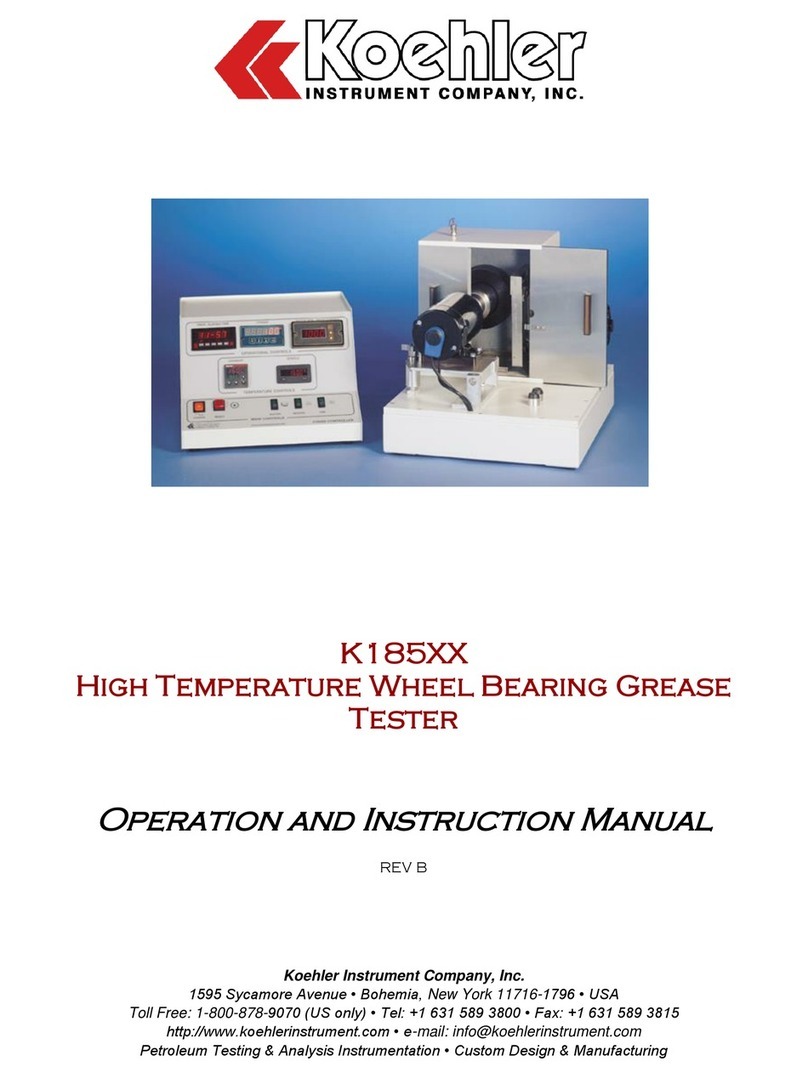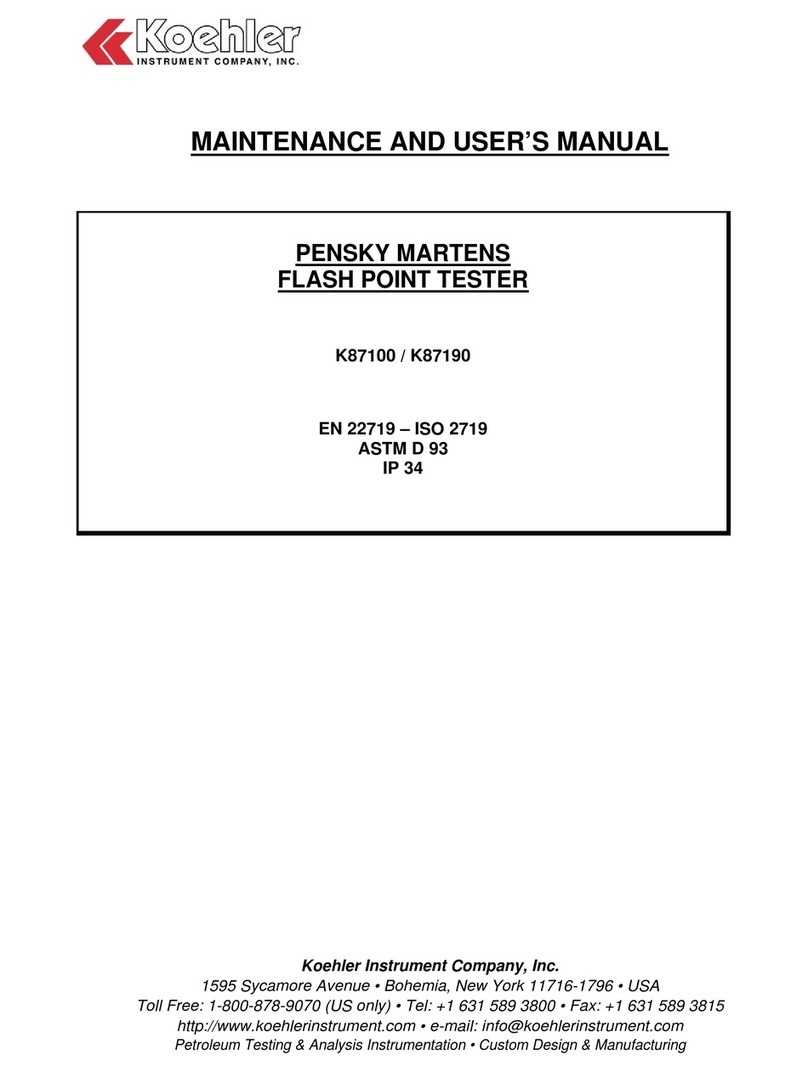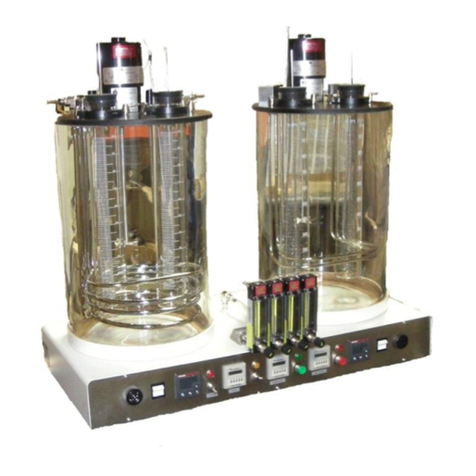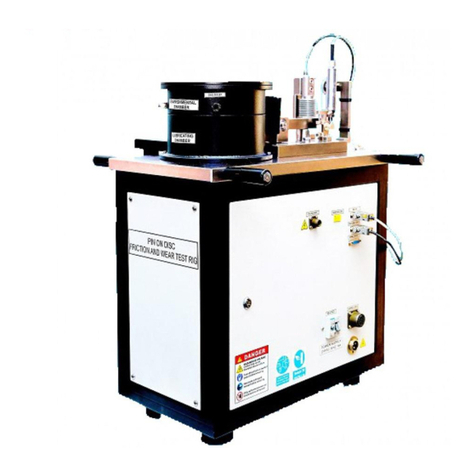
- Page 10 -
USER MANUAL
3. Apparatus Assembly
3.1 Before use, check that the filter support screen is clean. If necessary, the screen must be
cleaned by boiling in a high boiling point aromatic solvent. When more than 2 % of the sinter
area remains blocked by particulate matter after such cleaning, discard the screen and install
a new one.
3.2 The filtration unit must be clean and dry before assembly. Stack the two previously dried and
weighed filter media on top of the sinter support with the mesh imprint side down, using forceps,
placing the one from the lower numbered weighing bottle on the bottom. Apply slight vacuum
to aid in centering the filter media, and place the top portion of the filtration apparatus
carefully on to the media before clamping.
Shut off the vacuum and pass steam at 100 ±1°C through the heating/cooling coils for 10 min
prior to sample addition.
4. Sample Addition
4.1 Into a 30 mL beaker, pour approximately 11 g of the fuel sample prepared as described in 9.1
and weigh to the nearest 0.01 g.
Connect the vacuum source and apply vacuum to an absolute pressure of 40 ±2 kPa minimum
(61.3 kPa vacuum). Heat the contents of the beaker to 100 ±2°C. Then transfer the contents at
100 ±2°C (Note 3) to the center of the filter medium, taking care that no sample touches the
walls during transfer (Note 4). Reweigh the beaker to the nearest 0.01 g. The quantity
transferred should be 10 ±0.5 g. When filtration is not complete in 25 min, discontinue
the test and repeat using 5 ±0.3 g of sample. If filtration is still not complete in 25 min, report
the result as filtration exceeds 25 min.
NOTE 3—It is expedient to weigh the beaker plus stirrer plus temperature measurement
device before and after transfer to avoid errors incurred by attempting to obtain
a net weight. Any convenient means of heating the fuel sample to 100 ±2°C may
be used, such as hot plate, water or oil bath, or an oven when equipped with a
suitable stirrer. Samples that overheat above 105°C must be discarded and
not reused.
NOTE 4—For samples of high viscosity or high sediment, level fi ltration will be aided by
small stage or even dropwise addition. It is preferable to avoid complete
coverage of the fi lter medium with unfi ltered oil sample.
For samples of low fi ltration rate the pressure of 40 ±2 kPa should be
maintained for the 25-min period.












